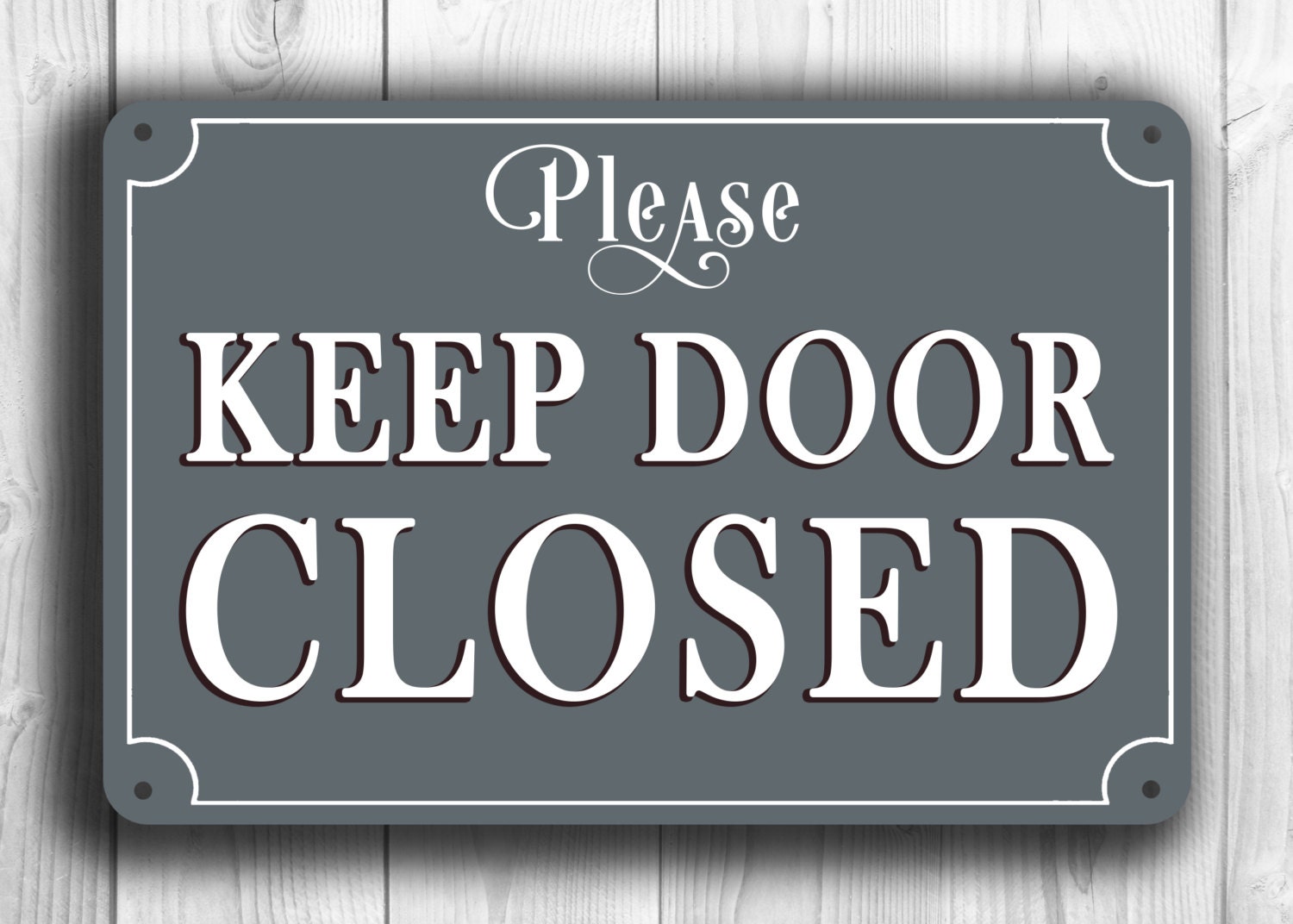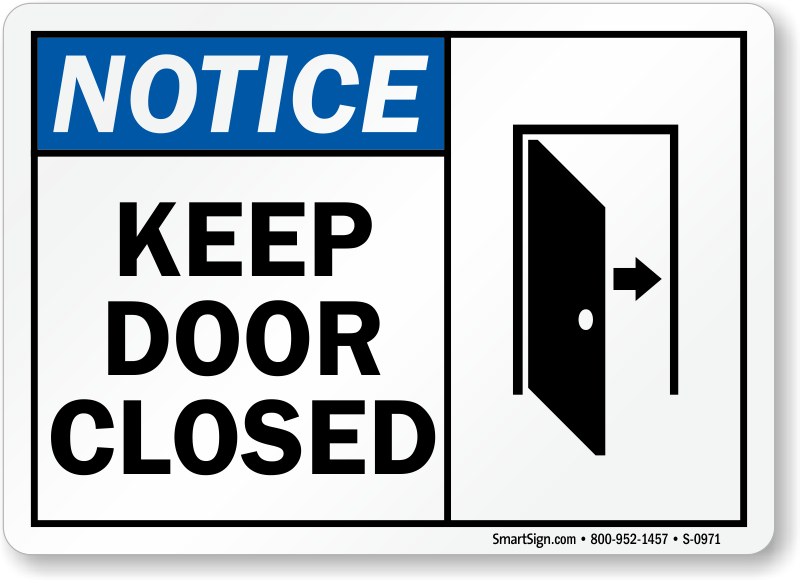Reasons for Keeping Bathroom Doors Closed: Keep Bathroom Door Closed

Let’s be real, sharing a bathroom can be a whole vibe, especially when you’re living with fam or roommates. But there’s a reason why most peeps keep the bathroom door shut, and it ain’t just about being mysterious. It’s all about keeping things clean, private, and respectful.
Privacy and Personal Space
Sharing a bathroom can be a bit awkward, especially when you need some time to yourself. Closing the door creates a boundary, letting everyone know you’re in your own zone. It’s about respecting each other’s privacy and making sure everyone feels comfortable. Think of it like this: It’s like having your own little sanctuary where you can chill and do your thing without feeling like someone’s watching.
Hygiene and Cleanliness
Let’s be honest, bathrooms can get pretty messy. Closing the door helps contain the mess, preventing germs and odors from spreading throughout the house. Think about it: You wouldn’t want your fam smelling your morning breath, right? Keeping the door closed helps keep the bathroom fresh and clean for everyone.
Potential Risks of Leaving the Bathroom Door Open
Leaving the bathroom door open can lead to some not-so-pleasant situations. One of the biggest risks is spreading germs. Imagine someone leaving the bathroom door open after using the toilet, leaving behind a trail of bacteria. Yikes! It’s also not cool to have your business out in the open, literally.
Creating a More Comfortable and Private Bathroom Experience
Making the bathroom feel more private is about creating a space that’s both functional and relaxing. This means making sure there’s enough space for everyone to move around comfortably and having enough storage to keep things organized. A little bit of decoration can also go a long way.
Practical Considerations for Closing Bathroom Doors

Closing the bathroom door is more than just a matter of privacy; it’s a practical decision that impacts functionality, aesthetics, and even the overall well-being of your space. Let’s delve into the practical considerations of bathroom door choices and how to optimize their performance.
Bathroom Door Types: A Comparative Analysis
Choosing the right bathroom door style depends on your specific needs and preferences. Here’s a breakdown of the advantages and disadvantages of common bathroom door types:
| Door Type | Advantages | Disadvantages |
|---|---|---|
| Sliding Doors |
|
|
| Swinging Doors |
|
|
| Pocket Doors |
|
|
Proper Installation and Maintenance for Bathroom Doors
A well-installed and maintained bathroom door ensures smooth operation and long-lasting performance. Follow these steps to achieve optimal results:
- Preparation is Key:
- Measure the door opening accurately to ensure the correct size door is purchased.
- Prepare the door frame and surrounding walls for installation.
- Remove any existing door or hardware before starting the installation process.
- Install the Door Frame:
- Secure the door frame to the wall using appropriate fasteners, ensuring it is level and plumb.
- Use shims to adjust the frame for proper alignment.
- Check for stability and ensure the frame is securely fastened before proceeding.
- Hang the Door:
- Attach the hinges to the door and door frame, ensuring they are properly aligned.
- Carefully hang the door on the hinges, making sure it swings smoothly and doesn’t bind.
- Adjust the hinge screws as needed to ensure a smooth and effortless swing.
- Install the Door Hardware:
- Attach the door handle and lock, ensuring they are securely fastened and function correctly.
- Install the door stop to prevent the door from swinging too far and damaging the wall.
- Double-check that all hardware is securely installed and functioning properly.
- Regular Maintenance:
- Clean the door and hardware regularly to prevent dust and grime buildup.
- Lubricate the hinges and lock mechanism periodically to ensure smooth operation.
- Tighten any loose screws or fasteners to prevent damage and ensure stability.
Soundproofing Bathroom Doors
Reducing noise transmission from the bathroom is essential for maintaining privacy and minimizing disturbance. Here are some practical solutions:
- Add Weatherstripping: Applying weatherstripping around the door frame can create a tight seal, blocking sound and light.
- Install a Door Sweep: A door sweep attached to the bottom of the door helps seal the gap between the door and the floor, reducing noise leakage.
- Use Acoustic Panels: Installing acoustic panels on the wall behind the door can absorb sound waves, minimizing noise transmission.
- Consider a Solid Core Door: Solid core doors are generally better at soundproofing than hollow core doors, providing a more substantial barrier.
Ventilation and Airflow Management
Maintaining adequate ventilation in a bathroom with a closed door is crucial for preventing moisture buildup and promoting a healthy environment. Here are some practical solutions:
- Exhaust Fan: Installing an exhaust fan is essential for removing moisture and odors from the bathroom. Ensure the fan is properly sized and vented to the exterior.
- Window Ventilation: If your bathroom has a window, open it slightly during and after showers to allow fresh air circulation.
- Door Vents: Consider incorporating small vents or louvers in the door to allow for limited airflow while maintaining privacy.
- Natural Ventilation: If possible, design your bathroom with a window that can be opened for natural ventilation.
Cultural and Social Perspectives on Bathroom Door Etiquette

Bathroom door etiquette, the unspoken rules surrounding when and how to close the bathroom door, is a fascinating window into the cultural norms and social expectations of different societies. This seemingly simple act of closing a door reveals a complex interplay of privacy, hygiene, and social comfort.
Cultural Variations in Bathroom Door Etiquette, Keep bathroom door closed
Cultural norms play a significant role in shaping bathroom door etiquette. In some cultures, like Japan, it’s customary to leave the bathroom door open, even in shared spaces. This reflects a collectivist mindset where privacy is less valued, and communal living is prioritized. In contrast, Western cultures, particularly in the United States, often emphasize individual privacy, leading to a strong preference for closed bathroom doors.
Keep bathroom door closed – Keeping your bathroom door closed offers a sense of privacy and helps maintain a clean and organized space. However, sometimes the door might get locked from the inside, leaving you wondering what to do. If you find yourself in this situation, check out this helpful article on bathroom door locked from inside for solutions and tips.
By understanding the reasons behind a locked bathroom door and the various ways to unlock it, you can ensure your privacy and safety while maintaining a clean and organized bathroom.
Want to keep your bathroom door closed for privacy and sound dampening? Consider a pocket door! These space-saving beauties slide into the wall, eliminating the need for swing space. But before you start planning, you’ll need to know the right bathroom pocket door dimensions to ensure a smooth installation and a perfectly fitting door that keeps your bathroom private and serene.